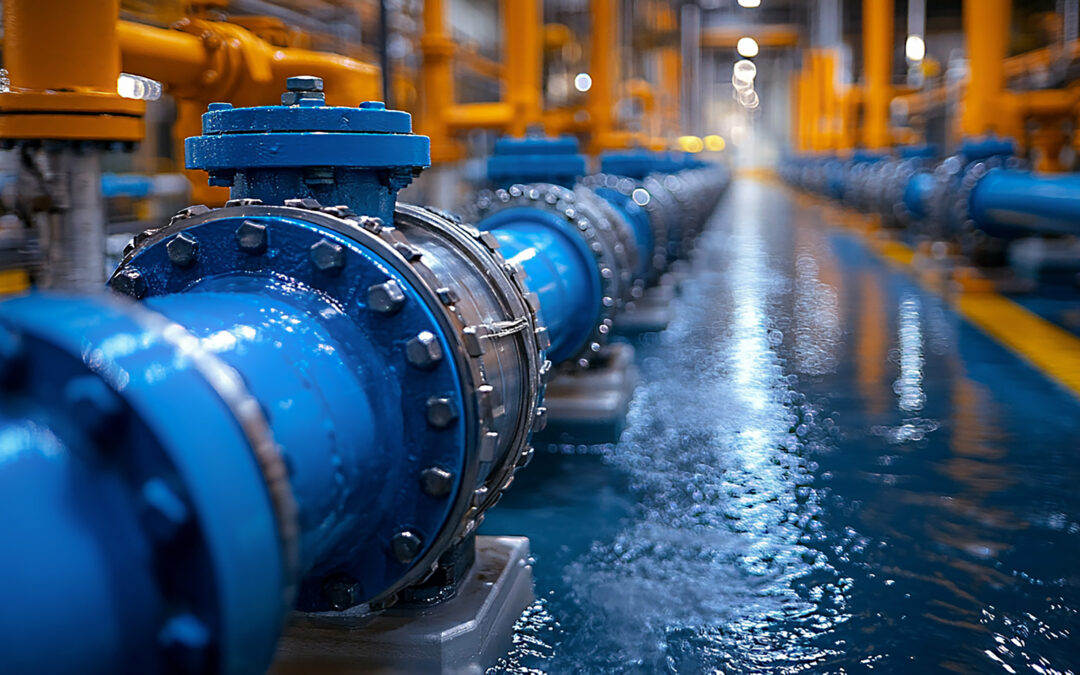In the realm of civil engineering, pipeline design, encompassing both bulk and reticulation systems, is critical for the effective distribution of water. At Kukhanya Projects, we specialize in creating innovative and efficient pipeline solutions to meet diverse water supply needs. This article delves into the intricacies of pipeline design, highlighting key considerations and best practices.
Understanding Pipeline Design
- Bulk Pipeline Systems Bulk pipelines are designed to transport large volumes of water over long distances. These pipelines are typically used to move water from sources such as reservoirs, lakes, or rivers to treatment facilities or storage tanks. Key considerations in bulk pipeline design include:
-
- Material Selection: Choosing the right material (e.g., steel, ductile iron, PVC) based on factors like durability, cost, and environmental conditions.
- Diameter and Thickness: Calculating the optimal diameter and wall thickness to handle the required flow rate and pressure.
- Hydraulic Design: Ensuring efficient water flow by minimizing friction losses and avoiding turbulence.
- Structural Integrity: Designing pipelines to withstand external loads, internal pressures, and potential ground movements.
- Reticulation Pipeline Systems Reticulation pipelines, on the other hand, distribute water from bulk pipelines to end users, such as residential, commercial, and industrial properties. Important aspects of reticulation pipeline design include:
-
- Network Layout: Planning an efficient network layout to ensure uniform water distribution and minimal pressure loss.
- Pressure Management: Implementing pressure-reducing valves and pumps to maintain optimal pressure levels throughout the network.
- Leak Detection and Prevention: Incorporating advanced technologies for detecting and preventing leaks to reduce water loss and maintain system integrity.
- Accessibility and Maintenance: Designing the network to facilitate easy access for routine maintenance and emergency repairs.
Best Practices in Pipeline Design
- Comprehensive Planning Effective pipeline design begins with comprehensive planning, which involves:
-
- Demand Analysis: Conducting a detailed analysis of current and future water demand to ensure the pipeline system can accommodate growth.
- Environmental Impact Assessment: Evaluating potential environmental impacts and implementing measures to mitigate adverse effects.
- Stakeholder Engagement: Engaging with stakeholders, including local communities, regulatory authorities, and other relevant parties, to ensure the project meets all requirements and expectations.
- Advanced Engineering Techniques Utilizing advanced engineering techniques enhances the efficiency and reliability of pipeline systems:
-
- Computer-Aided Design (CAD): Employing CAD software for precise design and modeling of pipeline systems.
- Hydraulic Modeling: Using hydraulic modeling tools to simulate water flow and optimize pipeline design.
- Geographic Information Systems (GIS): Integrating GIS technology for accurate mapping and analysis of pipeline routes.
- Sustainable Design Practices Incorporating sustainable design practices ensures long-term viability and minimal environmental impact:
-
- Energy Efficiency: Designing pipelines to minimize energy consumption during water transport.
- Material Recycling: Using recyclable materials and promoting the reuse of pipeline components where feasible.
- Green Infrastructure: Incorporating green infrastructure elements, such as rainwater harvesting systems, to enhance water resource management.
Conclusion
At Kukhanya Projects, we are committed to delivering state-of-the-art pipeline designs that ensure efficient and reliable water distribution. Our expertise in bulk and reticulation pipeline systems allows us to create solutions tailored to the unique needs of our clients. By adhering to best practices and leveraging advanced technologies, we strive to contribute to sustainable water management and infrastructure development.
For more information on our pipeline design services, please visit Kukhanya Projects or contact us directly. Let us help you build a resilient and efficient water distribution system.


Recent Comments